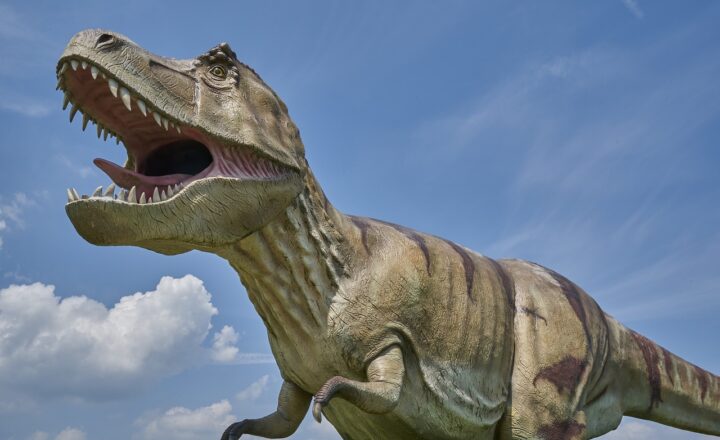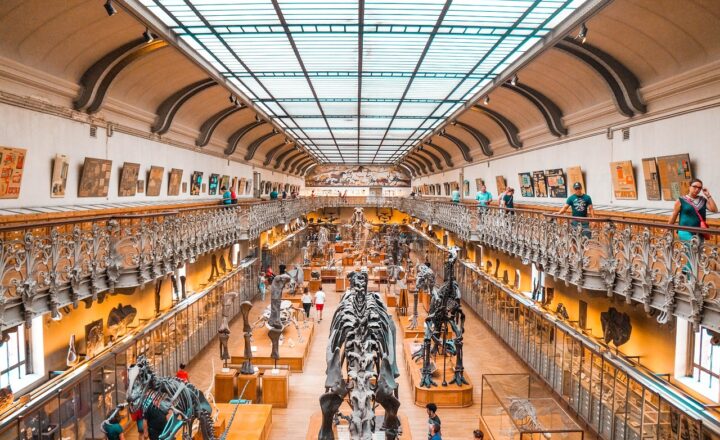Meet the Dinosaurs of the Jurassic Period: Giants of Earth’s Forests and Oceans
November 14, 2024

The Jurassic Period, spanning from approximately 201 to 145 million years ago, is often considered one of the most fascinating chapters in Earth’s geological history. During this time, the planet was teeming with life, and towering dinosaurs dominated both the land and seas. This article will take you through a detailed exploration of the diverse dinosaurs that roamed during the Jurassic Period, their habitats, behaviour, and how they adapted to survive in a changing world.
1. Overview of the Jurassic Period
The Jurassic Period is the second of the three geological periods that make up the Mesozoic Era. It is characterized by a warm climate and high sea levels, which created vast shallow seas. As continental drift continued, landmasses began to separate, shaping unique ecosystems. The Jurassic Period is divided into three divisions: the Early Jurassic, the Middle Jurassic, and the Late Jurassic.
During this period, dinosaurs flourished. Both herbivores and carnivores evolved rapidly, adapting to changes in the environment, including shifts in vegetation and climate.
2. Iconic Dinosaurs of the Jurassic Period
While countless species existed during the Jurassic, several have captured the imagination of paleontologists and the public alike. Here are some of the most iconic dinosaurs from this time:
2.1. Brachiosaurus
The Brachiosaurus is one of the largest dinosaurs to ever walk the Earth, reaching lengths of up to 80 feet and heights of around 40 feet. Unlike many other sauropods, Brachiosaurus had longer front legs than hind legs, which allowed its neck to reach higher into trees, feeding on foliage others couldn’t access. This unique adaptation made it a serene giant of the Jurassic forests.
2.2. Stegosaurus
The Stegosaurus, known for its distinctive double row of large, bony plates along its back and spiked tail, was a herbivorous dinosaur that lived in the Late Jurassic. This dinosaur could grow up to 30 feet long and had a relatively small brain, which puzzled scientists for years. Its unique physical characteristics not only provided defense against predators but likely played a role in thermoregulation—absorbing heat from the sun.
2.3. Allosaurus
The Allosaurus was one of the top predators of the Jurassic ecosystem, measuring over 30 feet long. Possessing sharp teeth and clawed hands, it likely hunted large herbivores such as Brachiosaurus and Stegosaurus. The Allosaurus was a representative theropod with keen hunting instincts and possibly social behavior, as evidence suggests it may have hunted in packs.
2.4. Diplodocus
Known for its long neck and tail, the Diplodocus was a colossal herbivore that could grow up to 85 feet in length. Its long neck allowed it to graze on treetops with ease. Studies show it could have used its tail as a form of communication or defense. Diplodocus lived in herds, providing safety in numbers against predatory threats.
3. Aquatic Life in the Jurassic Seas
The Jurassic Period was not just a time for terrestrial giants; the seas were teeming with life. Marine reptiles such as
Plesiosaurs and the formidable
Mosasaurus dominated the oceans, while schools of fish swam with ancient ammonites. The interaction between land and sea created a rich tapestry of biodiversity.
3.1. Plesiosaurus
Plesiosaurs were marine reptiles with characteristic long necks and broad bodies. The Plesiosaurus could measure up to 16 feet long, using its four large flippers to propel itself through the water. Its long neck allowed it to reach for prey and observe the environment, making it well-suited for its aquatic habitat.
3.2. Ammonites
Ammonites were cephalopods with spiral shells, closely related to modern-day squids and octopuses. They were abundant and diverse during the Jurassic, forming essential parts of the marine food web. Their intricate shells offer beautiful fossil specimens today, showcasing the artistry of evolution during this period.
4. The Ecosystem of the Jurassic Period
The Jurassic Period was characterized by vast forests, wetlands, and expansive shallow seas. The predominant plants included cycads, ferns, and conifers, which provided ample food for herbivorous dinosaurs. As dinosaurs adapted to their environments, so did the flora, creating symbiotic relationships between plants and animals.
4.1. Flora and Fauna Relationships
Plants evolved alongside dinosaurs, developing toxins or protective features to deter herbivory. In turn, many herbivores developed unique adaptations to consume tough foliage, resulting in a dynamic balance within ecosystems. As a result, the Jurassic forests were not only habitats for dinosaurs but also intricate systems of life where all the elements interplayed.
5. The End of the Jurassic Period
The Jurassic Period gradually transitioned into the Cretaceous Period, lasting millions of years, with climatic shifts leading to changes in vegetation and habitats. Many dinosaur species had to adapt or face extinction as new predators and competition emerged. As ecosystems evolved, the Jurassic giants slowly faded from the landscape, paving the way for new life forms.
Conclusion
The Jurassic Period encapsulates a remarkable epoch in Earth’s history, dominated by magnificent dinosaurs and thriving ecosystems. Understanding these ancient giants not only provides insight into the evolution of life on our planet but also highlights the interconnectedness of all life forms throughout history. By studying these magnificent creatures, we can appreciate the imperative role they played in shaping the world as we know it today.
As we delve into our planet’s past, the Jurassic dinosaurs remind us of the resilience of life and our responsibility to conserve the biodiversity we have left. From the towering Brachiosaurus to the submarine Plesiosaurus, the legacy of the Jurassic giants continues to inspire fascination and studies of prehistoric life.








